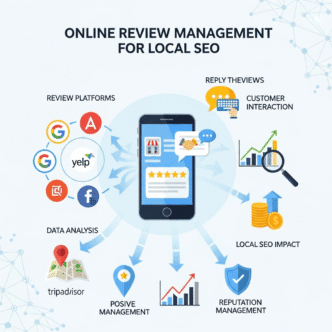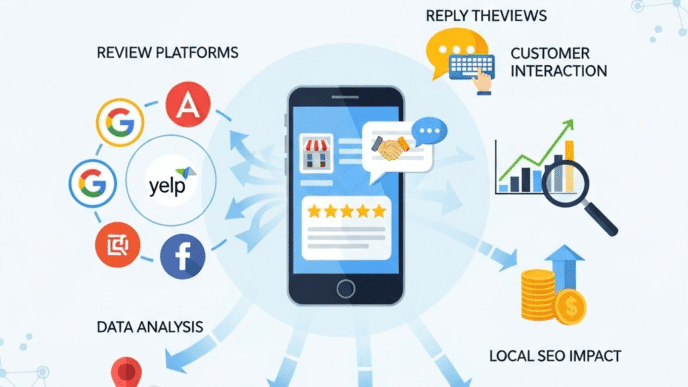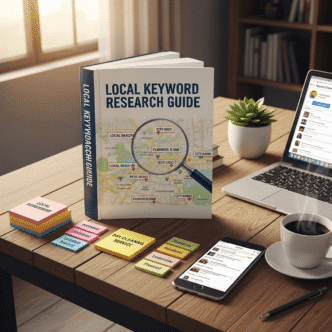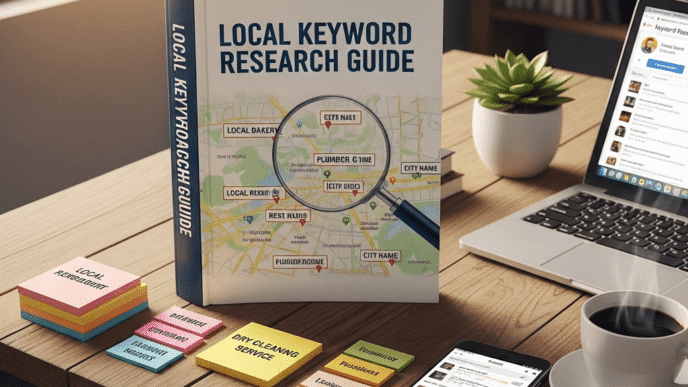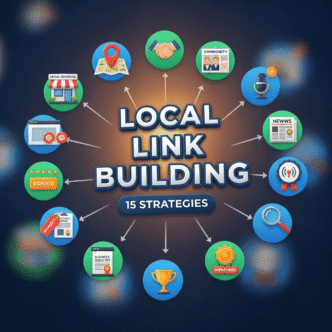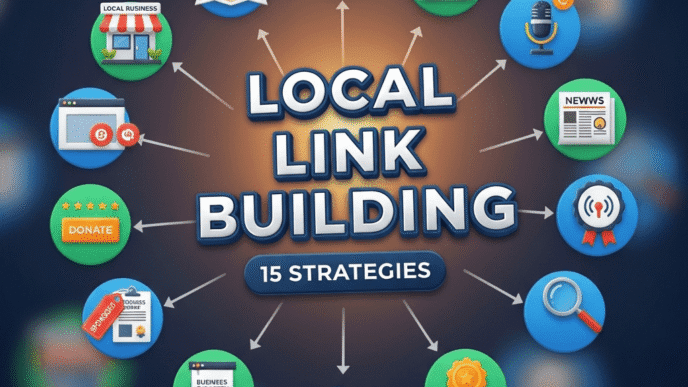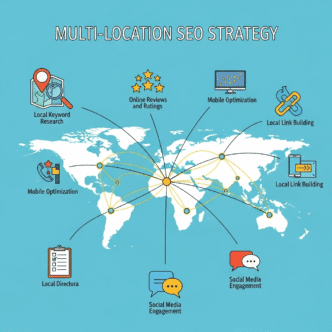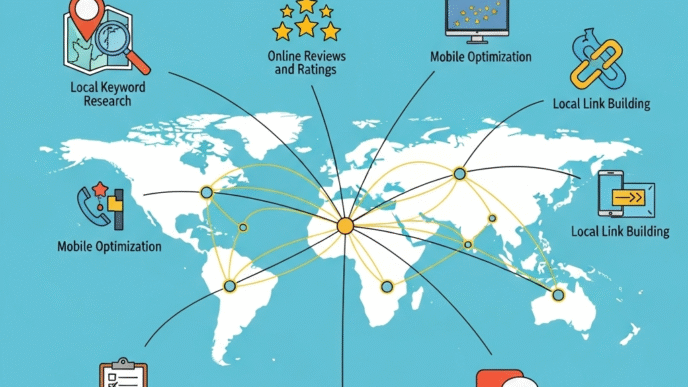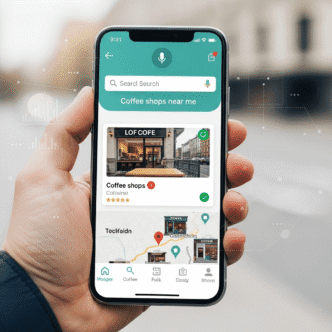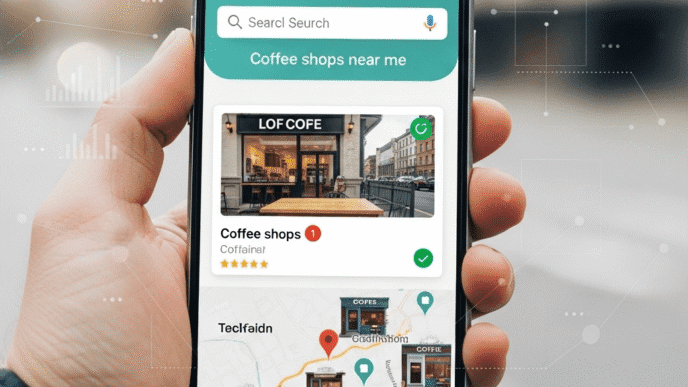Ever set up your Google Business Profile, hit publish, and then… crickets? You’re sitting there wondering why your competitors show up in the map pack while your business is nowhere to be found, even though you sell the exact same thing and you’re literally across the street.
Here’s the painful truth: 56% of businesses haven’t even claimed their Google Business Profile, and of those who have, most fill out maybe 30% of the available fields and call it a day. That’s like showing up to a job interview in your pajamas and wondering why you didn’t get hired.
Google Business Profile optimization isn’t just about claiming your listing anymore. In 2025, it’s become the single most powerful lever you can pull for local SEO—accounting for 36% of local pack ranking factors according to Whitespark’s latest data. If you’re not optimizing every section, posting regularly, and actively managing your profile, you’re essentially invisible to customers searching for businesses like yours.
This complete guide to optimizing Google My Business will walk you through every single step, from claiming your listing to advanced optimization tactics that’ll put you ahead of 90% of your local competitors. No fluff, no outdated advice—just what actually works in 2025.
Let’s turn that ghost town profile into a customer-generating machine.
Table of Contents
ToggleWhat Is Google Business Profile and Why Does It Matter for Local SEO?
Google Business Profile (formerly Google My Business) is your business’s digital storefront on Google. It’s the information box that appears when someone searches for your business name or finds you on Google Maps.
Think of it as your business’s resume that Google shows to millions of potential customers. When someone searches “coffee shop near me” or “plumber in Brooklyn,” your GBP is what determines whether you show up in those crucial top 3 map results—or get buried on page 5 where no one will ever find you.
How Much Does Google Business Profile Impact Your Rankings?
Let’s talk numbers. According to Whitespark’s 2025 Local Search Ranking Factors study, Google Business Profile signals account for 36% of local pack rankings. That’s more than reviews, on-page SEO, links, and citations combined.
Breaking that down further:
- Proximity to searcher (how close you are): Major factor
- GBP category selection: Critical
- Keywords in business title (legitimate use only): High impact
- Photos and posts: Significant engagement signals
- Reviews and ratings: 16% of ranking factors
- Regular updates and activity: Strong relevance signal
Translation? If your GBP isn’t optimized, you’re starting the local SEO race with a broken leg.
“Your Google Business Profile is no longer just a listing—it’s your primary digital presence. For most local businesses, more customers will interact with your GBP than your actual website.” — Sterling Sky Inc., Local Search Experts
Real-World Example:
Maria owns a family dental practice in Austin, Texas. After two years of barely ranking, she hired a local SEO consultant who discovered her GBP was only 40% complete. Over 60 days, they optimized every section, added 50 photos, started posting twice weekly, and implemented a review generation system. Her map pack visibility increased 340%, and new patient bookings from Google doubled. The cost? $0 beyond the consultant’s time—all through proper Google Business Profile optimization.
How Do You Claim Your Google Business Profile?
Before you can optimize anything, you need to actually own your listing. Here’s the step by step Google Business Profile setup process.
Is Your Business Already Listed on Google?
Here’s the thing: Google creates listings automatically based on public information they find online. Your business might already exist in their system—you just don’t control it yet.
To check if your listing exists:
Search for your exact business name plus your city on Google. If you see a knowledge panel on the right side or a pin on Google Maps, your listing exists.
If it exists but says “Own this business?” or “Claim this business,” that’s your ticket to claim it. If it doesn’t exist at all, you’ll create a new one from scratch.
Step-by-Step: Claiming an Existing Listing
Step 1: Go to business.google.com
Sign in with the Google account you want to use to manage your business. Pro tip: Use a company Gmail account, not your personal one, so multiple team members can access it later.
Step 2: Search for Your Business
Type your business name in the search bar. If Google finds a match, select it. If you see multiple locations, choose the correct one.
Step 3: Click “Claim This Business”
Google will walk you through verification. There’s no shortcut here—they need to confirm you actually own or manage this business.
Step 4: Choose Your Verification Method
Most businesses verify by postcard (Google mails a code to your business address). Other options include:
- Phone verification (instant, if available for your business type)
- Email verification (rare, for certain established businesses)
- Video verification (for some service-area businesses)
The postcard usually arrives in 5-14 days. When it arrives, log back in and enter the 5-digit code.
What If You’re Creating a New Listing?
If your business doesn’t exist in Google’s system yet:
Step 1: Click “Add your business to Google” Step 2: Enter your business name exactly as it appears in real life Step 3: Choose your business category (we’ll cover this in detail below) Step 4: Select if you have a physical location customers can visit Step 5: Enter your address (or service areas if you’re a service business) Step 6: Enter your phone number and website Step 7: Choose verification method
Google may ask additional questions based on your business type. Answer them honestly—lying here will come back to haunt you.
Pro Tip: Never create multiple listings for the same physical location, even if you offer different services. Google considers this spam and will suspend all your listings. One location = one profile, period.
What Categories Should You Choose for Your Google Business Profile?
Your primary category is possibly the most important single decision in your entire GBP optimization process. Choose wrong, and you’ll rank for the wrong searches—or not rank at all.
How Many Categories Can You Add?
You get one primary category (the most important) and up to nine additional categories. Your primary category carries significantly more weight than your additional categories.
Think of it like this: Your primary category tells Google what you fundamentally are. Additional categories tell Google what else you offer.
How Do You Choose the Right Primary Category?
Rule #1: Choose what you are, not what you want to rank for.
If you’re a pizza restaurant, your primary category should be “Pizza Restaurant,” not “Italian Restaurant” or “Restaurant” just because those get more searches.
Rule #2: Be as specific as possible.
“Pizza Restaurant” beats “Restaurant” “Family Law Attorney” beats “Lawyer” “Emergency Plumber” beats “Plumbing Service”
Google has over 4,000 categories. Use the most specific one that accurately describes your primary service.
Rule #3: Match what customers actually search for.
Research local searches in your industry. If people search “divorce lawyer” more than “family law attorney,” consider which category aligns with that search behavior.
What Additional Categories Should You Add?
Add categories for other significant services you provide, but don’t go crazy. Quality over quantity.
Good example for a dental practice:
- Primary: “Dentist”
- Additional: “Cosmetic Dentist,” “Pediatric Dentist,” “Emergency Dental Service”
Bad example: Adding every tangentially related category like “Health Consultant,” “Medical Office,” “Wellness Center” just to cover more ground. Google sees through this and it dilutes your relevance.
Real-World Example:
James owns a locksmith business in Seattle. His original primary category was “Locksmith” with no additional categories. He researched his Google Search Console data and found 40% of his customers were searching specifically for “emergency locksmith” and “car locksmith.” He changed his primary category to “Emergency Locksmith” and added “Auto Locksmith” and “Commercial Locksmith” as additional categories. Within 45 days, he started appearing in the map pack for emergency locksmith searches, and his emergency service calls increased by 65%.
Pro Tip: You can test different primary categories, but give each choice at least 30-45 days before switching. Category changes take time to impact rankings, and switching too frequently signals instability to Google.
How Do You Write a Compelling Business Description?
Your business description is your elevator pitch to both Google and potential customers. You have 750 characters—use them wisely in your Google Business Profile optimization strategy.
What Should You Include in Your Business Description?
Google’s algorithm reads your description for relevance signals, but humans read it to decide if they want to contact you. You need to satisfy both audiences.
Start with your primary keyword and location in the first sentence.
“Johnson’s Plumbing provides 24/7 emergency plumbing services to Chicago and surrounding suburbs, specializing in residential repairs and installations.”
This immediately tells Google what you do and where you do it.
Include your main services naturally in the second section.
“Our licensed plumbers handle everything from drain cleaning and water heater repair to pipe replacement and bathroom renovations.”
Don’t just list services with commas—weave them into readable sentences.
Highlight what makes you different.
“Family-owned since 1985, we’re known for showing up on time, explaining every option in plain English, and never upselling services you don’t need.”
This is where personality and trust signals come in.
End with a clear call to action.
“Call us today for a free estimate, or reach out online for same-day emergency service.”
What Should You NOT Put in Your Description?
No keyword stuffing. Don’t write: “Best plumber Chicago, top Chicago plumbing, emergency plumber near me, affordable plumber Chicago…” Google’s algorithm detects this immediately and it makes you look desperate to humans.
No promotional language. Avoid superlatives like “the best,” “the top,” “#1” unless you can back them up with specific awards or certifications.
No links or HTML. Google strips these out anyway.
No phone numbers, emails, or URLs. There are dedicated fields for these—use them.
No business hours or pricing. Again, dedicated fields exist for this information.
For a comprehensive understanding of how your business description fits into the bigger picture of local search dominance, check out our guide on local SEO mastery.
What Photos Should You Upload to Your Google Business Profile?
Businesses with photos get 42% more requests for directions and 35% more clicks to their websites compared to businesses without photos. Photos aren’t optional—they’re essential for local business profile optimization.
What Types of Photos Does Google Want?
Google Business Profile has specific photo categories, and you should fill them all:
Logo: Your official business logo (square format works best, minimum 720x720px)
Cover Photo: The hero image that appears at the top of your profile (landscape orientation, minimum 1080x608px)
Exterior Photos: At least 3-5 photos showing your building, signage, parking, and entrance
Interior Photos: 5-10 photos showing your space (if customers visit your location)
Products: Photos of individual products or services you offer
Team Photos: Images of your staff, leadership, or team in action
At Work: Behind-the-scenes photos showing your business in action
Videos: Short clips (under 30 seconds work best) showing your business, products, or services
How Many Photos Should You Upload?
Minimum: 10 photos covering the categories above Good: 30 photos showing various aspects of your business Excellent: 50+ photos updated regularly
More importantly: Add new photos monthly. Google favors profiles that show ongoing activity and freshness.
What Makes a Good GBP Photo?
Good photos are:
- High resolution (at least 720px on the shortest side)
- Well-lit (natural light or professional lighting)
- In focus and properly exposed
- Showing actual people, products, or your real location
- Recent (not 5-year-old photos of how things used to look)
Bad photos are:
- Stock images (Google can detect these and may remove them)
- Blurry, dark, or low quality
- Heavy filters or excessive editing
- Photos with watermarks or promotional text overlay
- Outdated images that don’t reflect your current business
Real-World Example:
Rachel owns a boutique yoga studio in Portland. Initially, she uploaded 8 stock photos of generic yoga poses she found online. Her GBP views were stagnant at around 200/month. She hired a local photographer for $300 to capture 40 authentic images: real classes with actual students (with signed releases), studio shots showing the space and amenities, team photos of her instructors, and behind-the-scenes preparation images. After uploading these photos over 6 weeks, her profile views jumped to 750/month, and most importantly, trial class bookings tripled because prospects could see the actual studio environment and community vibe before committing.
Pro Tip: Photos of your team outperform almost every other photo type in terms of engagement. People want to see who they’ll be working with. Make sure you have permission from employees before posting their photos publicly.
How Do You Optimize Your Business Information Fields?
Every field you leave blank is a missed opportunity. Complete profiles rank better and convert better. Here’s your Google Business Profile optimization checklist 2025 for every field.
Business Name: What’s Allowed and What’s Not?
Use your actual, legal business name—nothing more, nothing less.
Good: “Johnson’s Plumbing” Bad: “Johnson’s Plumbing | 24/7 Emergency | Chicago”
Google explicitly prohibits keyword stuffing in your business name. If they catch you (and they will), your listing can be suspended.
The only exception: If your business legally operates with a descriptor in its name, you can include it. For example, “Johnson’s 24-Hour Plumbing” is fine if that’s your registered business name.
Phone Number: Which One Should You Use?
Use a local phone number whenever possible. If you’re trying to rank locally, a local area code signals relevance.
Use a tracking number if you want to measure calls from Google, but:
- Make sure it forwards to your real business number
- Don’t change it frequently
- Never use a number that goes to a call center in another state
Use the same phone number on your website, citations, and everywhere else online. NAP consistency matters for local SEO success.
Website: What If You Don’t Have One?
If you don’t have a website, Google offers a free website builder through your GBP. It’s basic, but it’s better than nothing.
However, a proper website gives you more control and better conversion opportunities. If you’re serious about local SEO, invest in at least a simple 5-page website.
Pro Tip: Your website URL should match your business name and NAP information exactly. If your GBP says “123 Main St” your website contact page should say “123 Main St,” not “123 Main Street.
Business Hours: Why Accuracy Matters More Than Ever
Nothing frustrates potential customers more than showing up to a business that’s supposed to be open but isn’t.
Update your hours for:
- Regular hours (every day of the week)
- Holiday hours (Thanksgiving, Christmas, New Year’s, etc.)
- Special event hours
- Temporary closures
Google now allows you to set “More Hours” for specific services:
- Delivery hours
- Takeout hours
- Drive-through hours
- Happy hour
- Senior hours
- Online service hours
Use these if they apply to your business—they’re additional ranking opportunities.
Services: The Secret Weapon Most Businesses Ignore
The Services section is criminally underutilized. This is where you can list specific services with descriptions, and these descriptions are indexed by Google for search.
For each service, include:
- Service name (be specific)
- Description (100-300 words explaining what’s included)
- Pricing (optional, but transparency builds trust)
Example for a plumbing business:
Service: “Emergency Drain Cleaning” Description: “24/7 emergency drain cleaning for residential and commercial properties in Chicago. We handle clogged sinks, tubs, toilets, and main sewer lines using professional-grade equipment. Most emergencies resolved within 2 hours. Upfront pricing with no hidden fees.” Price: “Starting at $150”
Why this matters: When someone searches “emergency drain cleaning Chicago,” Google can match that specific service in your GBP to the search query, boosting your relevance.
Attributes: Check Every Box That Applies
Attributes are the little tags that appear on your profile like “Wheelchair accessible,” “Free Wi-Fi,” “Outdoor seating,” etc.
Google determines some automatically, but you can edit most of them. Go through every single attribute option and check the ones that apply.
Popular attributes that influence decisions:
- “Women-led” (increasingly important to searchers)
- “Black-owned” or “Latino-owned” (helps community-minded customers find you)
- “Accepts credit cards” (seems obvious, but many forget to add it)
- “Free parking” (huge for urban businesses)
- “Wheelchair accessible” (required by law in many cases)
- “LGBTQ+ friendly” (signals inclusive environment)
Don’t lie about attributes. If you get caught claiming false attributes, customers will roast you in reviews.
How Do You Use Google Posts to Boost Engagement?
Google Posts are like mini social media updates that appear directly on your GBP. They’re one of the most underutilized features in Google My Business setup, and they work incredibly well.
What Are Google Posts and Why Do They Matter?
Google Posts appear in your knowledge panel when people find your business on Google Search or Maps. They can include:
- Offers and promotions
- Events
- Product highlights
- General updates
Posts last for 7 days (updates) or until the event/offer expires. After that, they disappear—which means you need to post regularly.
Why bother? Posts signal to Google that your business is active and engaged. Active profiles tend to rank better than dormant ones.
What Types of Posts Should You Create?
Offer Posts: Special deals, discounts, or promotions
- “20% off drain cleaning this week only”
- “New customer discount: $50 off first service”
Event Posts: Upcoming events, workshops, or special occasions
- “Free plumbing inspection clinic – Saturday 10am-2pm”
- “Meet our new master plumber at our open house”
Product Posts: Highlighting specific products or new offerings
- “New tankless water heater installation service”
- “Now offering eco-friendly plumbing solutions”
Update Posts: General news, tips, or announcements
- “5 signs your water heater needs replacement”
- “We’re now open Saturdays!”
How Often Should You Post?
Minimum: Once per week Good: 2-3 times per week Overkill: Daily (unless you have genuinely newsworthy content)
Consistency matters more than frequency. Weekly posting maintained over months beats sporadic bursts of daily posts followed by radio silence.
Real-World Example:
David owns a family-owned Italian restaurant in Boston. He started posting twice weekly on his GBP: Monday specials, Thursday event announcements, and occasional chef’s recommendations. He included mouth-watering photos of actual dishes from his kitchen (not stock photos). Over 4 months, his “website clicks” from GBP increased 88%, and more importantly, he could directly correlate post days with reservation spikes—especially when he posted time-sensitive specials.
Pro Tip: Include a clear call-to-action button with every post. Google lets you choose from options like “Learn More,” “Call Now,” “Book,” “Order Online,” or “Sign Up.” Don’t leave this blank—it’s a direct conversion path.
How Do You Handle the Q&A Section?
The Questions & Answers section is simultaneously one of the most powerful and most dangerous features of your GBP. Anyone can ask questions, and worse, anyone can answer them—including your competitors.
Why Is Q&A Important for Google Business Profile Optimization?
Q&A appears prominently on your profile, often above reviews. Potential customers see these questions and answers before they ever call or visit your website.
The problem: If you ignore this section, random people (including competitors) can answer questions about your business, potentially with wrong or misleading information.
The solution: Proactively manage your Q&A section.
How Should You Manage Questions and Answers?
Step 1: Answer every legitimate question quickly
Set up notifications so you’re alerted when someone asks a question. Aim to respond within 24 hours.
Step 2: Seed your Q&A with common questions
You can ask and answer your own questions. This isn’t cheating—it’s smart.
Post questions you know customers frequently ask:
- “Do you offer emergency services?”
- “What forms of payment do you accept?”
- “Are you licensed and insured?”
- “Do you offer free estimates?”
Then provide detailed, helpful answers.
Step 3: Flag and remove inappropriate content
If someone posts spam, profanity, or competitor sabotage, flag it for removal. Google usually acts on legitimate flags within 24-48 hours.
Step 4: Update outdated answers
If your business changes (new services, new hours, new policies), go back and update relevant Q&A responses.
What Makes a Good Q&A Answer?
Good answers are:
- Specific and detailed (not just “yes” or “no”)
- Written in a friendly, helpful tone
- Accurate and up-to-date
- Include relevant keywords naturally
Example of a weak answer: Q: “Do you offer emergency plumbing services?” A: “Yes.”
Example of a strong answer: Q: “Do you offer emergency plumbing services?” A: “Yes! We provide 24/7 emergency plumbing services throughout Chicago and suburbs. We typically arrive within 90 minutes of your call for urgent situations like burst pipes, gas leaks, or major water damage. Call us directly at (555) 123-4567 for immediate dispatch.”
The strong answer includes keywords (emergency plumbing services, Chicago), sets expectations (90 minutes), lists specific emergencies, and provides a direct call-to-action.
Understanding how Q&A fits into your overall local SEO strategy helps you see why this seemingly small feature punches above its weight.
How Do You Optimize Your Products and Services Sections?
The Products section is relatively new, and most businesses either ignore it completely or barely scratch the surface. That’s your opportunity.
What’s the Difference Between Products and Services?
Products: Physical items you sell (retail, ecommerce, etc.) Services: Work you perform for customers (plumbing, legal, consulting, etc.)
If you’re a service business, focus on the Services section. If you sell products, use the Products section. If you do both (like a restaurant selling food plus offering catering), use both.
How Should You Structure Your Services Section?
Each service gets its own entry with:
- Service name: Specific and keyword-rich
- Category: Google provides these; choose the most relevant
- Description: 100-300 words explaining what’s included
- Price: Optional, but transparency helps
Pro Tip: Add at least 5-10 services. The more specific services you list, the more search queries you can potentially match.
Example services for a dental office:
- Teeth Cleaning & Checkup
- Teeth Whitening
- Dental Implants
- Emergency Dental Care
- Invisalign Treatment
- Root Canal Therapy
- Pediatric Dentistry
- Dental Crown Installation
Each of these can rank for different specific searches.
How Do You Add Products Effectively?
For product-based businesses, you can create a mini catalog directly in your GBP.
Each product includes:
- Product name
- Category
- Description
- Price
- Photos (multiple photos per product)
- Link (to product page on your website)
Best practices:
- Add your most popular or profitable products first
- Use high-quality photos showing the product clearly
- Write unique descriptions (don’t copy from manufacturer specs)
- Update products seasonally or when inventory changes
- Include price if you’re competitive on price
Real-World Example:
Sarah owns a boutique gift shop in Charleston. She initially just had her GBP claimed with basic info. When Google rolled out the Products feature, she spent a weekend photographing her 50 best-selling items and uploading them with detailed descriptions. Within 6 weeks, she started getting messages through GBP asking about specific products people found in her product catalog, and foot traffic from Google Maps visitors increased 30%. Several customers told her they came in specifically to see items they found in her Google profile.
What Advanced GBP Features Should You Enable?
Beyond the basics, Google offers several advanced features that most businesses overlook. These features can give you a significant edge in competitive markets.
Should You Enable Messaging?
Google Business Profile messaging lets customers send you text messages directly from your profile. They text from their phone, you receive it in the GBP mobile app.
Pros:
- Immediate connection with customers
- Many people prefer texting over calling
- Signals engagement to Google
- Can respond with photos, links, etc.
Cons:
- Requires monitoring (if you ignore messages, it hurts your reputation)
- Response time shows publicly (“Typically responds in 1 hour”)
- Need to have a human available to respond
Best for: Service businesses, retail stores, restaurants taking reservations
Not ideal for: Businesses that can’t commit to responding within a few hours
If you enable messaging, respond to every message within 1 hour during business hours. Your response time displays publicly on your profile.
Should You Add a Booking Button?
If you take appointments, adding a booking button to your GBP is a must. Google integrates with various scheduling platforms:
Popular booking integrations:
- Acuity Scheduling
- Booksy
- Calendly (through custom link)
- Square Appointments
- Vagaro
- Schedulicity
The booking button appears prominently on your profile, making it frictionless for customers to schedule appointments without visiting your website.
Real-World Example:
Dr. Mike runs a chiropractic clinic in Denver. After adding a booking button integrated with Acuity Scheduling, 35% of his new patient appointments came directly through his GBP—customers who never even visited his website. The seamless booking experience reduced no-shows because automated reminders went out immediately after booking.
What About Adding Menus?
Restaurants, bars, and cafes can add full menus directly to their GBP. Customers can browse your menu without leaving Google.
Menu options:
- Upload a PDF of your menu
- Link to your menu URL
- Add menu items individually with photos, descriptions, and prices
Adding a detailed menu with photos increases engagement significantly. People want to see what you offer and how much it costs before they visit.
Should You Use the Website Builder?
Google offers a free website builder that creates a basic site from your GBP information. It’s better than nothing if you don’t have a website, but it’s extremely limited.
Pros:
- Free
- Automatically updates when you update GBP
- Mobile-friendly
- Easy to set up
Cons:
- Very basic design (you can’t customize much)
- Limited SEO capabilities
- No blog, no detailed service pages
- Can’t add custom forms or features
Bottom line: Use it as a temporary solution while you build a proper website, but don’t rely on it long-term.
How Do You Track Your Google Business Profile Performance?
You can’t improve what you don’t measure. Google provides detailed insights about how customers find and interact with your profile—use them in your best practices for Google Business Profile optimization.
What Metrics Should You Track?
Discovery:
- How customers find your listing (direct searches vs. discovery searches)
- Total searches (branded searches for your business name)
- Views on Search vs. Maps
Engagement:
- Website clicks
- Phone calls
- Direction requests
- Booking button clicks (if enabled)
- Message conversations (if enabled)
Photos:
- Total views of your photos
- Photo count compared to competitors
- Customer vs. business photos
Reviews:
- Total review count
- Average rating
- Review response rate
Where Do You Find These Insights?
Log into your Google Business Profile dashboard and click “Insights” in the left menu. You’ll see data for the last 7, 30, or 90 days.
Key metrics to watch weekly:
- Total searches (is your visibility growing?)
- Website clicks and calls (are you converting searchers?)
- Direction requests (are people actually coming to your location?)
Key metrics to watch monthly:
- Search query data (what terms are people using to find you?)
- Competitor photo comparison (are you keeping up?)
- Review velocity (are you getting new reviews regularly?)
How Do You Interpret This Data?
If searches are low: You need more visibility. Focus on getting reviews, adding posts, and building citations. Reference our local SEO mastery guide for comprehensive strategies to boost local visibility.
If you have searches but low actions: Your profile information isn’t compelling or complete. Add more photos, fill out services, write a better description.
If you’re getting calls/clicks but no conversions: The problem is likely on your website or with your phone answering process, not your GBP.
If photos views are low: Add more photos, especially of your team and location. Photos drive engagement.
Pro Tip: Screenshot your insights data monthly and track trends over time. The built-in reporting only shows 90 days of history, so if you want year-over-year comparisons, you’ll need to save historical data yourself.
What Are the Most Common Google Business Profile Mistakes?
Even businesses that “optimize” their GBP often make critical mistakes that undermine their efforts. Let’s fix them.
Mistake #1: Inconsistent Business Name
Your business name on GBP must match your business name on your website, citations, and everywhere else online exactly.
Wrong:
- GBP: “Johnson’s Plumbing LLC”
- Website: “Johnson’s Plumbing”
- Yelp: “Johnsons Plumbing”
Right:
- Everywhere: “Johnson’s Plumbing”
Pick one format and use it consistently across the internet.
Mistake #2: Wrong Category Selection
Choosing “Restaurant” when you’re specifically a “Pizza Restaurant” or choosing “Lawyer” when you’re specifically a “Family Law Attorney” dilutes your relevance.
Be as specific as possible with your primary category.
Mistake #3: No Photos or Outdated Photos
Profiles with no photos get 42% fewer direction requests. That’s not a typo—you’re losing nearly half your potential foot traffic by skipping photos.
Even worse: Using photos that are 5 years old and don’t reflect your current business.
Mistake #4: Ignoring Reviews
70% of consumers say business responses to reviews influence their perception of the business. Not responding to reviews—especially negative ones—signals you don’t care about customers.
Respond to every review, positive or negative, within 48 hours.
Mistake #5: Never Posting Updates
If your last Google Post was from 6 months ago, Google (and customers) assume you’re barely operating. Post at least once per week to signal active engagement.
Mistake #6: Incomplete Business Information
Every blank field is a missed opportunity. Fill out every single section: hours, services, products, attributes, website, phone, description—all of it.
According to Google’s own guidance, complete profiles are more likely to appear in relevant searches.
Mistake #7: Using a Fake Address or Fake Location
Some businesses try to game the system by creating fake locations in cities they want to rank in. This is explicitly against Google’s guidelines and will get all your listings suspended when caught.
If you’re a service area business, use the service area feature instead of faking addresses.
Mistake #8: Keyword Stuffing Your Business Name
Adding “24/7 Emergency | Best in Chicago | Affordable” to your business name is tempting but forbidden. Google detects this and can suspend your listing.
Your legal business name only.
Real-World Example:
Tom owned three auto repair shops in the Seattle area. He thought he was being clever by creating five listings for each location—one with the regular name, one with “emergency” added, one with “24 hour,” etc. Within three months, Google suspended all 15 listings for guideline violations. It took him 8 weeks, a lawyer, and significant documentation to get his three legitimate listings reinstated. He lost an estimated $50,000 in revenue during the suspension. Don’t be Tom.
What’s the Difference Between Google Business Profile and Local SEO?
This is a common point of confusion. Your GBP is one crucial component of local SEO strategy, but it’s not the whole picture.
How Does GBP Fit Into the Bigger Picture?
Think of local SEO as a three-legged stool:
Leg 1: Google Business Profile (what we’ve covered in this guide)
- Claiming and optimizing your profile
- Managing reviews and engagement
- Regular posts and updates
Leg 2: On-Page SEO (your website)
- Location-specific pages
- Local keywords in content
- NAP consistency
- Schema markup
Leg 3: Off-Page SEO (your presence across the web)
- Citations (directory listings)
- Local backlinks
- Social media presence
- Review profiles on other platforms
All three legs need to be strong for your local SEO to be stable. An optimized GBP with a terrible website and no citations won’t get you very far. Similarly, a great website with no GBP optimization is like fighting with one hand tied behind your back.
Can You Rank Well With Just GBP Optimization Alone?
Short answer: In very low-competition markets, maybe. In any competitive market, absolutely not.
GBP optimization alone will:
- Get you some map pack visibility
- Generate some calls and direction requests
- Build baseline local presence
But you’ll need the full local SEO strategy to:
- Dominate competitive keywords
- Outrank established competitors
- Build sustainable long-term rankings
- Expand to multiple locations or service areas
Think of GBP as the foundation of your house. You need a solid foundation, but you also need walls, a roof, plumbing, and electricity. For the complete blueprint on building all these components together, dive into our comprehensive local SEO mastery guide.
How Often Should You Update Your Google Business Profile?
Google Business Profile optimization isn’t a “set it and forget it” task. Ongoing maintenance signals to Google that your business is active and engaged.
What Should You Update Weekly?
Google Posts: At least once per week
- Monday: Week’s special offer
- Thursday: Upcoming event or news
- Occasional: Tips, products, seasonal content
New Photos: 2-3 new photos per week
- Behind-the-scenes shots
- New products or completed projects
- Team activities
- Customer interactions (with permission)
Q&A Monitoring: Check daily
- Respond to new questions within 24 hours
- Flag inappropriate content
- Update outdated answers
What Should You Update Monthly?
Review Responses: Ongoing (respond within 48 hours of each review)
Business Hours: Verify accuracy, especially around holidays
Services Section: Add new services, update descriptions, adjust pricing
Special Hours: Add holiday hours, temporary closures, special events
Insights Review: Check performance metrics and adjust strategy
What Should You Update Quarterly?
Photo Audit: Remove outdated photos, add fresh seasonal images
Description Review: Update your business description to reflect current services, recent awards, or new specialties
Category Review: Check if more specific categories have become available for your industry
Competitor Analysis: See what competitors are doing with their GBPs and identify gaps
What Should You Update Annually?
Complete Profile Audit: Go through every single field and verify accuracy
Strategic Review: Assess whether your GBP strategy is working based on a year of data
Major Updates: Significant business changes like new locations, rebranding, major service additions
Pro Tip: Create a recurring calendar reminder for each of these tasks. Most businesses fall off the wagon not because they don’t know what to do, but because they forget to do it consistently. Fifteen minutes per week beats three hours once every six months.
How Do You Handle Negative Reviews on Your Google Business Profile?
Negative reviews are inevitable. How you handle them can actually improve your reputation and local SEO performance.
Should You Try to Get Negative Reviews Removed?
Only if they violate Google’s review policies:
- Fake reviews (posted by competitors or someone who wasn’t a customer)
- Spam or irrelevant content
- Profanity or hate speech
- Reviews about a competitor disguised as reviews of your business
- Reviews that contain personal information
If a review is legitimate customer feedback (even if harsh or unfair), Google won’t remove it. You need to respond instead.
How Do You Respond to Negative Reviews Professionally?
Step 1: Respond quickly Aim for within 24 hours. Quick responses show you take feedback seriously.
Step 2: Thank them for their feedback Even if you want to scream, start with gratitude: “Thank you for taking the time to share your experience.”
Step 3: Acknowledge their specific concern “I’m sorry to hear that your service appointment took longer than expected and that our communication could have been better.”
Step 4: Take responsibility (when appropriate) If you or your team made a mistake, own it. “This doesn’t meet our standards for customer service, and I apologize.”
Step 5: Offer to make it right offline “I’d love the opportunity to discuss this with you directly and find a solution. Please call me at (555) 123-4567 or email me at ow***@******ss.com.”
Step 6: Show what you’re doing to improve “We’ve already addressed this with our team to ensure this doesn’t happen to future customers.”
Example of a good response:
Review: “Waited 3 hours for the plumber who never showed up. Called twice with no answer. Terrible service.”
Response: “Thank you for sharing this feedback, and I sincerely apologize for this completely unacceptable experience. Missing an appointment without communication is not acceptable, and I understand your frustration. I’d like to learn more about what happened and make this right. Please call me directly at (555) 123-4567 or email ow***@**************ng.com. We’ve already reviewed our dispatch process to prevent this from happening again. Again, I’m truly sorry.” — John Smith, Owner
What About Fake Reviews From Competitors?
Flag them immediately using the “Flag as inappropriate” option on the review. Provide any evidence you have that the reviewer wasn’t a real customer.
Evidence that helps:
- Proof they’re a competitor or affiliated with one
- Their review history shows they only leave negative reviews
- They describe services you don’t offer or situations that never happened
- They use language copied from reviews of other businesses
Google investigates flagged reviews, but the process can take days or weeks. Keep flagging and follow up if necessary.
What you can’t do: Pay services to remove negative reviews. This violates Google’s policies and can get your entire listing suspended.
Understanding how review management fits into your broader local reputation strategy is crucial. Learn more in our local SEO guide.
What Advanced Schema Markup Should You Add?
While not technically part of your GBP, adding LocalBusiness schema markup to your website enhances how Google understands and displays your business information.
What Is Schema Markup for Local Businesses?
Schema markup is code you add to your website that tells Google explicitly what your business information means. It’s like giving Google a labeled map instead of making them guess what everything is.
Basic LocalBusiness schema includes:
- Business name
- Address
- Phone number
- Business hours
- Price range
- Accepted payment methods
- Geographic area served
Why Does Schema Matter for GBP Optimization?
Google cross-references information between your website, your GBP, and other sources online. When everything matches and is properly marked up, Google gains confidence in your information and is more likely to display you prominently.
Inconsistency between your schema markup and your GBP can hurt your rankings.
What Schema Properties Should You Include?
Essential properties:
- @type: "LocalBusiness" (or more specific like "Plumber", "Dentist", "Restaurant")
- name: Your exact business name
- address: Complete address matching GBP
- telephone: Phone number matching GBP
- openingHours: Business hours
- url: Your website homepage
Recommended properties:
- priceRange: "$", "$$", "$$$", or "$$$$"
- geo: Latitude and longitude coordinates
- hasMap: Link to your Google Maps listing
- image: Logo and photos of your business
- paymentAccepted: Credit cards, cash, etc.
- areaServed: Cities/regions you serve
Advanced properties:
- aggregateRating: Your average rating and review count
- review: Individual reviews with ratings
- menu: Link to menu (for restaurants)
- servesCuisine: Type of food (for restaurants)
You can generate schema markup using Google’s Structured Data Markup Helper or plugins like Yoast SEO (WordPress) or Schema Pro.
Pro Tip: After adding schema markup to your website, test it using Google’s Rich Results Test to make sure it’s implemented correctly and doesn’t have errors.
How Do You Optimize GBP for Multiple Locations?
If you operate multiple locations, your Google Business Profile optimization strategy becomes more complex but also more powerful.
Should Each Location Have Its Own GBP?
Absolutely yes. Every physical location where customers can visit you should have its own unique Google Business Profile.
One location = One profile
Don’t create a single profile and list multiple addresses. Each location needs its own dedicated profile.
How Do You Manage Multiple GBPs Efficiently?
Option 1: Individual Profiles If you have 2-5 locations, you can manage them individually through the standard GBP interface.
Option 2: Bulk Management If you have 10+ locations, upgrade to bulk management tools:
- Google Business Profile API (for developers)
- Yext (paid service for multi-location management)
- BrightLocal (citation and multi-location management)
- Moz Local (multi-location citation management)
What Should Be Different Across Location Profiles?
Must be unique for each location:
- Physical address
- Local phone number (if you have them)
- Store code or location ID
- Business hours (if they differ)
- Photos of that specific location
- Reviews (each location accumulates its own)
Can be similar but should be customized:
- Business description (mention the specific location, neighborhood, or local landmarks)
- Services (some locations might offer different services)
- Special attributes (parking, accessibility may differ)
Should be consistent:
- Business name format
- Logo
- Website URL structure (e.g., yoursite.com/chicago, yoursite.com/boston)
- Brand messaging and tone
Real-World Example:
Fitness First gym operates 12 locations across Dallas-Fort Worth. Initially, they had one GBP listing with all addresses listed in the description—a violation of Google’s guidelines. After creating individual profiles for each location, they customized each profile with:
- Unique photos of that specific gym’s equipment and facilities
- Bios of trainers working at that location
- Parking and transit information specific to that address
- Reviews collected specifically from members at each location
- Posts about events happening at individual locations
Within 6 months, 9 of their 12 locations ranked in the top 3 map pack results for “gym [neighborhood name]” searches, and overall new membership inquiries increased 180%.
How Long Does It Take to See Results From GBP Optimization?
The timeline question everyone wants answered. Here’s the realistic expectation for your how to optimize Google Business Profile for local SEO efforts.
What Results Can You Expect in the First 30 Days?
Week 1-2: Initial Changes
- Profile verification completes
- Basic information appears in search results
- First reviews start appearing
- Initial photo views begin
Metrics you might see:
- 10-30% increase in profile views
- First phone calls and direction requests from Google
- Your business starts showing up for branded searches
Week 3-4: Early Momentum
- Google indexes your complete profile information
- Posts start appearing
- Review count begins growing
- Photos get more engagement
Metrics you might see:
- 30-50% increase in profile views
- Noticeable uptick in website clicks
- Starting to appear in “near me” searches occasionally
What About Months 2-3?
This is when optimization really starts paying off:
If you’ve been consistent with:
- Weekly Google Posts
- Regular photo uploads
- Review generation efforts
- Complete profile information
You should see:
- 50-100% increase in total searches
- Appearing in map pack for some target keywords
- Steady stream of calls, clicks, and directions
- Growing review count (aim for 2-4 new reviews per month)
When Will You See Competitive Rankings?
Months 3-6: Establishing Authority
If your market is moderately competitive, this is when you start competing for top spots:
- Ranking in map pack for several local keywords
- Consistent presence in “near me” searches
- Growing faster than competitors who aren’t optimizing
Months 6-12: Full Optimization Impact
With 6+ months of consistent optimization:
- Top 3 map pack rankings for multiple target keywords
- Dominant local presence in your niche
- Strong review profile (50+ reviews)
- Higher conversion rates from searches to customers
What Factors Affect Your Timeline?
Competition Level:
- Low competition (small towns, niche services): Results in 30-60 days
- Medium competition (suburbs, common services): Results in 90-120 days
- High competition (major cities, saturated markets): Results in 6-12 months
Your Starting Point:
- Brand new business: Longer timeline (6-9 months)
- Established business optimizing for first time: Medium timeline (3-6 months)
- Existing optimized profile making improvements: Short timeline (4-8 weeks)
Consistency:
- Weekly posting and maintenance: Faster results
- Sporadic efforts: Slower, inconsistent results
- One-time setup then abandonment: Minimal lasting results
“Google Business Profile optimization is a marathon, not a sprint. The businesses that win are the ones that show up consistently every single week, not the ones that do everything perfectly for two weeks then disappear.” — Sterling Sky Inc., Google Business Profile Experts
Final Thoughts: Your Google Business Profile Optimization Action Plan
Google Business Profile optimization isn’t optional anymore—it’s the foundation of local search visibility in 2025. While your competitors are filling out 30% of their profile and calling it done, you now have the complete roadmap to dominate.
Here’s your 30-day action plan to get started:
Week 1: Foundation
- Claim and verify your listing
- Complete every single field (business name, address, phone, hours, website)
- Choose your primary and additional categories carefully
- Write your business description
- Add your logo and cover photo
Week 2: Visual Content
- Upload 20+ high-quality photos (exterior, interior, products, team)
- Create your first 3 Google Posts
- Add products or services with descriptions
- Enable messaging and booking (if applicable)
Week 3: Engagement Systems
- Set up review generation process
- Seed your Q&A with 5 common questions and answers
- Respond to any existing reviews
- Create a posting calendar for weekly updates
Week 4: Optimization & Tracking
- Add all relevant attributes
- Set special hours and holiday hours
- Set up insights monitoring
- Document your baseline metrics
- Create a monthly maintenance checklist
Remember: The businesses that dominate local search don’t have secrets you don’t know—they just execute consistently on what works. Your GBP is free, powerful, and completely within your control. The only question is whether you’ll actually do the work.
Start today. Your future customers are searching right now.
Frequently Asked Questions About Google Business Profile Optimization
How long does it take to verify my Google Business Profile?
Verification by postcard typically takes 5-14 business days for the card to arrive. Phone and email verification (when available) can be instant. Video verification usually takes 3-5 business days for Google to review. If your postcard doesn’t arrive within 2 weeks, you can request a new one through your GBP dashboard. Never try to verify multiple times simultaneously as this can trigger fraud detection systems.
Can I have multiple Google Business Profiles for one location?
No. Google’s guidelines explicitly prohibit creating multiple listings for the same physical location, even if you offer different services or want to target different keywords. One location = one profile. If you’re caught with duplicate listings, Google will suspend all of them. The only exception is if you have genuinely separate businesses operating from the same building (like a retail store and a separate consulting firm).
What should I do if my Google Business Profile is suspended?
First, identify why it was suspended—check for guideline violations like fake address, keyword-stuffed business name, or duplicate listings. Fix the underlying issue, then request reinstatement through the GBP dashboard. Provide documentation proving your business legitimacy: business license, utility bills, photos of storefront with signage, tax documents. Be patient—reinstatement can take 3-8 weeks. If you’re stuck, consider hiring a specialist who handles GBP suspensions.
How many reviews do I need to rank well in local search?
There’s no magic number, but data shows businesses with 50+ reviews consistently outrank those with fewer. More importantly, review velocity matters—getting 2-4 authentic reviews per month signals ongoing customer satisfaction. Quality trumps quantity: 20 five-star reviews with detailed, authentic content outperform 100 generic “great service” reviews. Focus on consistent review generation rather than trying to get 50 reviews all at once.
Should I respond to positive reviews or just negative ones?
Respond to all reviews—both positive and negative. Responding to positive reviews shows appreciation, encourages future reviews, and provides an opportunity to include keywords naturally in your response. 89% of consumers read business responses to reviews, and response rate impacts both rankings and conversion. Keep positive review responses brief but genuine: thank the customer, mention specific details from their review, and invite them back.
Can I use my home address for my Google Business Profile?
Yes, if you operate a home-based business. However, if customers don’t visit your home location (like if you’re a service provider who travels to clients), you should hide your address and use the service area feature instead. If customers do visit your home office, you can display the address. Never use a fake address, PO Box, or virtual office—these violate guidelines and will get you suspended.
What happens if I change my business address?
Update your GBP immediately with the new address. Also update your website, citations, and all online listings to maintain NAP consistency. If possible, keep your old GBP active marked as “temporarily closed” for 30-60 days while your new location’s profile builds authority, then close the old one. This prevents a sudden drop in visibility. Expect some ranking fluctuation for 4-8 weeks while Google processes the location change.
How do I optimize my Google Business Profile for multiple cities?
If you have physical locations in multiple cities, create separate GBP profiles for each location. If you’re a service-area business serving multiple cities without physical locations, use the service area feature to specify which cities you serve. Create location-specific pages on your website for each city you target. Don’t create fake addresses in cities where you don’t have actual offices—this violates guidelines and leads to suspension.
Why isn’t my Google Business Profile showing up in search results?
Common reasons: your profile isn’t verified, your information is incomplete, you’re searching from outside your service area, your competition is stronger, your business category doesn’t match the search query, or you have NAP inconsistencies across the web. Verify your listing is published and visible, complete every profile section, build citations, generate reviews, and post regularly. If you’re in a competitive market, expect 3-6 months of consistent optimization before seeing significant visibility.
Can I optimize my Google Business Profile for free?
Absolutely. Everything covered in this guide—claiming, verifying, optimizing, posting, managing reviews, uploading photos—is 100% free. You don’t need paid tools to have an excellent GBP. Paid tools like BrightLocal, Yext, or Moz Local can make management easier (especially for multiple locations), but they’re not necessary for success. The most important investments are time and consistency, not money.
How does Google Business Profile affect my website traffic?
A well-optimized GBP drives traffic to your website through the website button, posts with links, and increased brand awareness from appearing in local search results. However, GBP is so feature-rich that many customers now take action directly from the profile (calling, getting directions, booking appointments) without visiting your website. This is why phone number and address accuracy matter as much as website optimization. Think of GBP as a parallel conversion path, not just a gateway to your website.
What’s the difference between Google Business Profile and Google My Business?
They’re the same thing. Google rebranded “Google My Business” to “Google Business Profile” in 2021 to better reflect that your profile appears across Google Search, Maps, and other services. The functionality remained the same—just the name changed. If someone refers to “Google My Business” or “GMB,” they’re talking about what’s now called Google Business Profile or GBP.
Should I use a tracking phone number on my Google Business Profile?
You can, but proceed carefully. Tracking numbers help measure calls from your GBP, but frequent number changes confuse customers and hurt NAP consistency. If you use a tracking number, make sure it: forwards to your real business number, stays consistent long-term, has a local area code, and is used consistently across other citations. Never use a 1-800 number or a number that rings to a call center in another state.
How do Google Posts affect my rankings?
Google Posts don’t directly impact rankings, but they signal activity and engagement, which are indirect ranking factors. Active profiles with regular posts tend to outperform dormant profiles because posting demonstrates your business is operational and engaged with customers. Posts also improve click-through rates by providing timely information, offers, and calls-to-action that encourage searchers to contact you.
Can competitors sabotage my Google Business Profile?
Unfortunately, yes. Competitors can post fake negative reviews, suggest incorrect edits to your profile, ask and answer questions with wrong information, or flag your listing with false reports. Combat this by: monitoring your profile daily, responding to all reviews professionally, quickly correcting suggested edits, proactively managing your Q&A section, and flagging fraudulent activity. Google usually sides with verified business owners who provide evidence of manipulation.
Ready to dominate local search? Start with your Google Business Profile today. Claim it, complete it, and commit to weekly optimization. Six months from now, when your competitors are wondering why you’re getting all the calls, you’ll know it was because you actually did the work they were too busy (or lazy) to do.
For a comprehensive approach to local SEO beyond just your GBP, explore our complete Local SEO Mastery guide to see how all the pieces fit together.
Related posts:
- Local SEO Mastery: The Complete Guide to Dominating Local Search in 2025 (Visual guide)
- Local Keyword Research Guide: Find Keywords That Drive Local Customers (Visual guide)
- Service Area Business SEO: Rank Without a Physical Location
- Local SEO in Competitive Markets: Outrank Established Competitors in 2025 (Visual guide)





